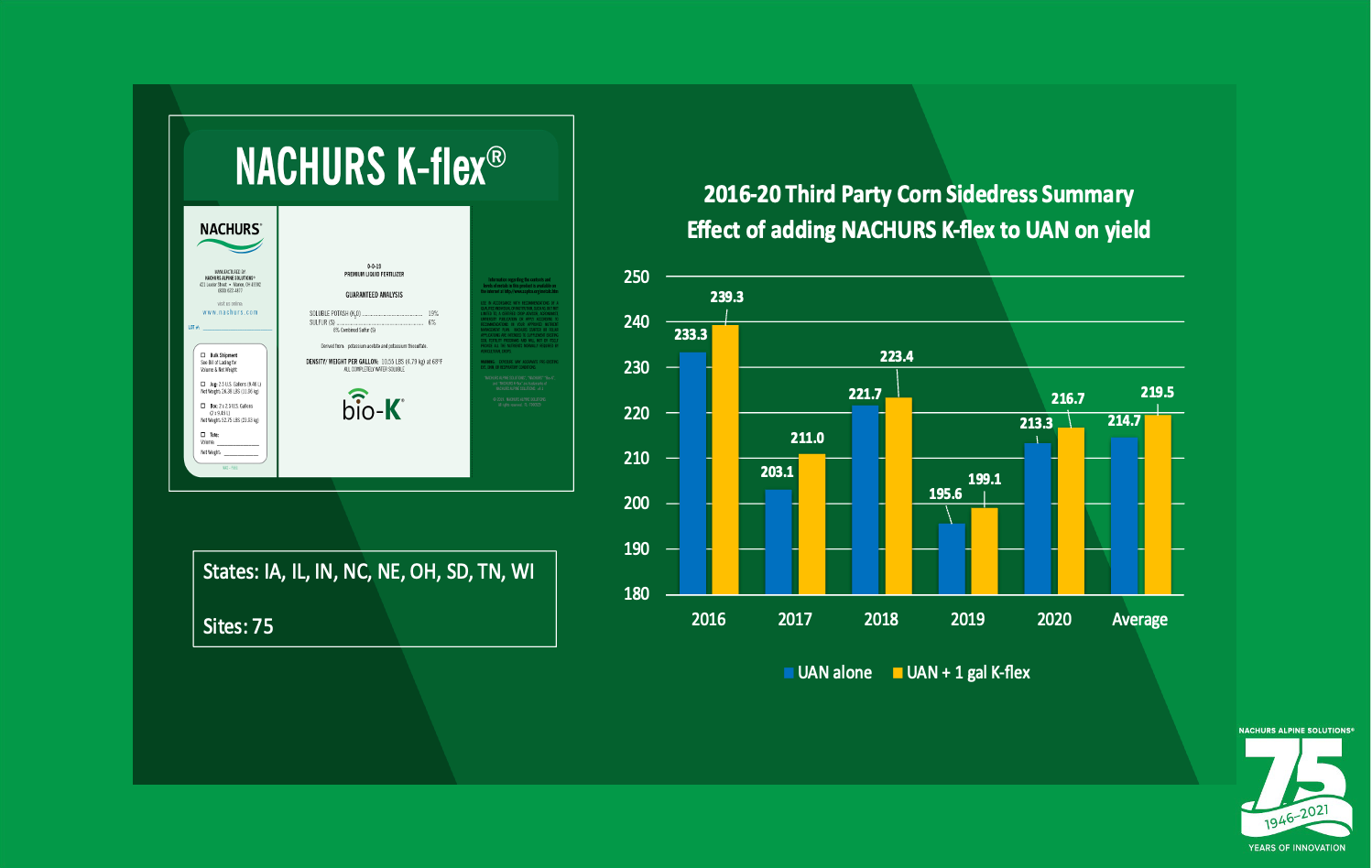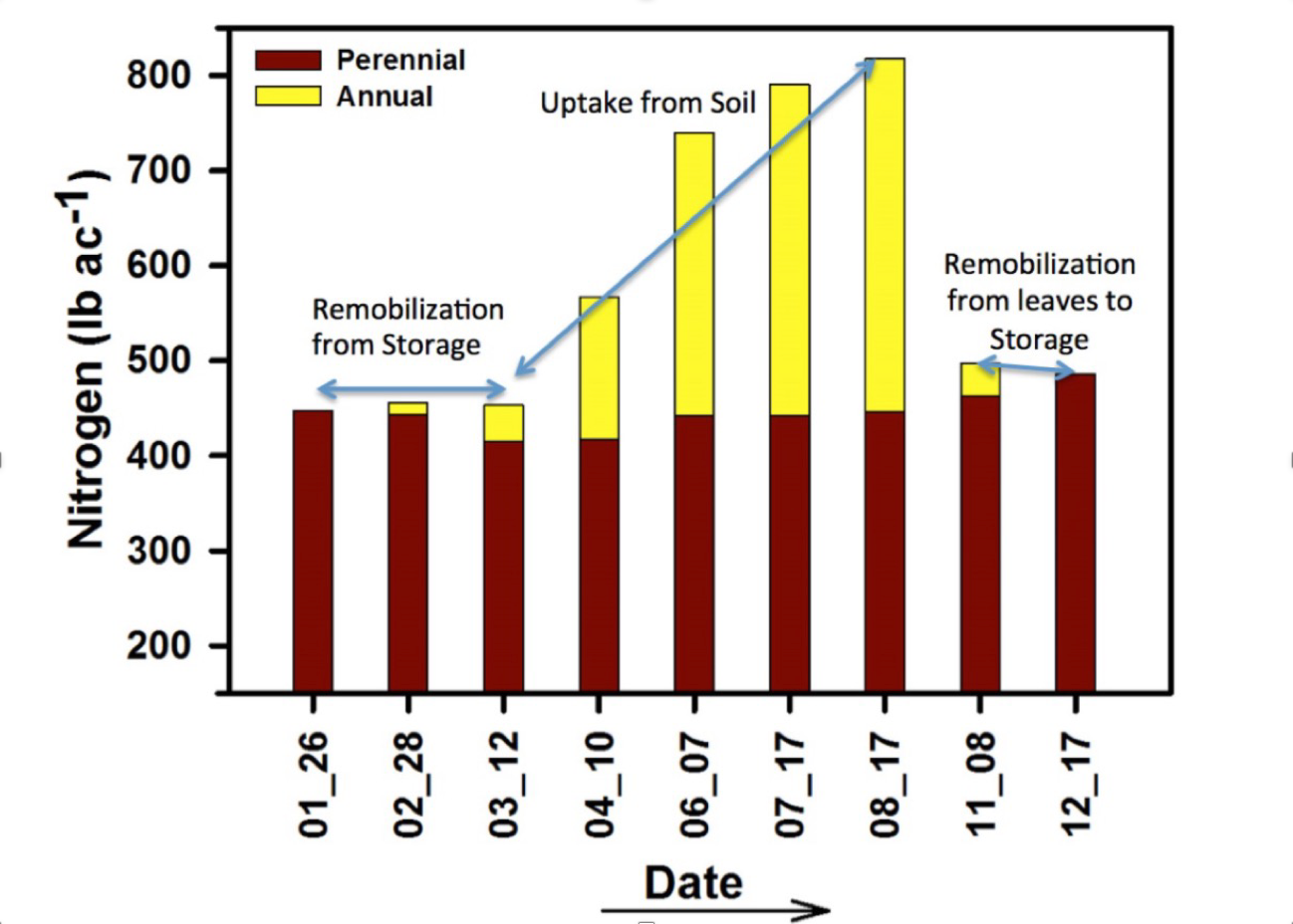AgroInsights- Regenerative Ag
NACHURS Bio-K® and Nitrogen Use Efficiency
Rod Carlsen, California District Sales Manager
NACHURS® is the original 4R company. In fact, NACHURS® was the first fertilizer company to develop seed-safe liquid fertilizers in the U.S. back in the 1950s. The goal, since the company’s inception, has been to provide the right form of fertilizer at the correct, physiological stage of plant growth to garner the corresponding, correct plant response.
Since 2014, we have formulated an array of high-quality, liquid fertilizers containing our NACHURS Bio-K® technology as the driving force towards prompting plant response. Bio-K® is a recognizable energy source both to the plant and the soil microbiome. Whether applied to the soil or as a foliar, Bio-K® fosters a multitude of capabilities around the root tips where the root exudates are released for microbial acquisition and use.
One benefit of Bio-K® that we have studied is nitrogen use efficiency in corn. Specifically, our NACHURS K-flex® product (0-0-19-6 sulfur) was evaluated for five, consecutive growing seasons (2016-2020) to evaluate the impact of Bio-K® with sulfur being added to UAN applications at V3-V5 via coulter/knife. Over the course of a five-year span, across nine states and 75 sites, saw an average increase of + 4.8 bu/acre when K-flex® was added to UAN at 1 gallon/acre vs. standard UAN alone.
See the results graph in Fig. 1 below:
Figure 1: 2016-2020 Third Party Corn Sidedress Summary. Effect of adding NACHURS® K-flex® to UAN on yield.

This past growing season, out west in California, NACHURS® evaluated another of our Bio-K® products, NACHURS K-fuel® (0-0-24), in almonds to look at the impacts on tree nitrogen uptake with the historical grower standard {water run, sulphate of potash (SOP) fines} vs. the historical grower standard (SOP fines) + NACHURS Bio-K® (K-fuel®). For California-grown almonds, the vast majority of in-season potassium is supplied in a liquid form through micro sprinklers, or drip irrigation systems. The grower applied his standard amount of nitrogen of 120 pounds of N/acre across both treatments. The mid-June leaf tissue sampling, which corresponds with peak tree demand period for uptake from the soil for both nitrogen (see figure 2 below) and potassium (by which time approximately 70% of the tree’s requirement has taken place) was especially revelatory (see table 1 below):
Figure 2: The time of greatest need of available N is between March and June, when the crop is growing (Neiderholzer, 2017).

Table 1: Mid-June Leaf tissue nitrogen and Potassium in CA almonds.

Why the uptick in leaf nitrogen in the Bio-K® treatment? The answer in large part is acetate carbon. Research has demonstrated that approximately 60% of nitrogen in plant and microbial cells is in the protein form (Geisseler et. al, 2010). Thus, the ammonium and nitrate forms of nitrogen comprise less of the total plant reservoir of nitrogen. Acetate carbon provides an energy source for the microbes to produce enzymes that break apart bonds in the soil that release organic forms of nitrogen, such as proteins and amino acid forms, and make it available for tree uptake.
What about yield? The year 1 increase of an additional 66 lbs. (+3 %) of kernel yield per acre in the grower standard + K-fuel® (NACHURS Bio-K®) treatment vs. the grower standard. We look forward to tracking the progress further in 2024!
Contact your local NACHURS® rep or retailer for more information.
SOURCES:
Neiderholzer, 2017. “Nitrogen and Potassium Utilization in Almond Orchards.” https://ccfruitandnuts.ucanr.edu/files/256016.pdf.
Geisseler et. al, 2010. “Pathways of nitrogen utilization by soil microorganisms – A review.” Soil Biology & Biochemistry vol. 42, 2058-2067.












